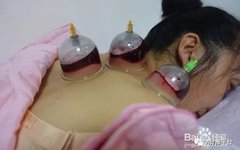Bloodletting therapy, also known as ci luo fang xue (刺络放血) or 排瘀疗法 (pai yu liáo fǎ), is a unique acupuncture treatment method in Traditional Chinese Medicine (TCM). It is one of the most commonly used therapeutic techniques since the era of the Nei Jing (内经), which even considers bloodletting as the first choice for treating diseases and alleviating suffering. Depending on the patient’s specific condition, a three-edged needle or a thick, sharp needle is used to puncture certain acupuncture points or superficial blood vessels on the patient’s body to release a suitable amount of blood, achieving the therapeutic purpose of this external treatment method.
Wherever there is strain or blockage in the meridians, there is varying degrees of residual stasis and toxins. Only by thoroughly expelling the residual stasis can the root cause of the strain be fundamentally resolved, and the best way to achieve this is through bloodletting therapy.
By repeatedly stimulating the areas of strain and blockage through massage techniques, the accumulated lactic acid and nodules of blockage are broken down. Bloodletting is performed at the sites of severe strain and blockage to completely expel the accumulated toxins and waste blood from the deep layers of the body. This can immediately improve and treat shoulder and neck diseases.Other areas of blockage in the body can also be treated using this method.At the same time, bloodletting therapy can promote the body’s metabolism, stimulate bone marrow hematopoiesis, accelerate metabolism, improve microcirculation and vascular function, facilitate the elimination of harmful substances from the blood, and ensure that beneficial substances are timely replenished into the blood circulation, helping the body to re-establish homeostasis and restore normal physiological functions. By improving microcirculation, it can also prevent excessive inflammatory responses and promote the recovery of inflammation.
1. Dark black blood, resembling ink, indicates a long-standing illness, suggesting that stasis has been present for a long time; 2. Blood mixed with water indicates rheumatism or liver disease; 3. Blood containing jelly-like mucus indicates damp-heat accumulation and stagnation over time; 4. Light-colored blood indicates inflammation or an early-stage illness. Purple-red blood indicates a new injury; 5. Blood resembling wash water indicates severe chronic dampness; 6. Clear watery fluid indicates edema; 7. Presence of blisters indicates heavy dampness; 8. Foamy liquid indicates wind pathogen; 9. A large volume of blood indicates a long illness; 10. A small volume of blood indicates a short illness or deep-seated condition; 11. If, after cupping, you feel a rush of heat when inserting your hand into the cup, it indicates heavy damp-heat; 12. Slow bleeding, even after multiple punctures, suggests qi deficiency and blood deficiency; 13. Light bleeding that does not coagulate easily indicates blood deficiency; 14. Blood that settles easily and coagulates quickly indicates qi deficiency.
Bloodletting Technique1. After identifying the bloodletting location, quickly puncture with wrist strength, ensuring the puncture points are dense and rapid.2. For expanded blood vessels, a single puncture should yield blood, which will generally spurt out, so be prepared to avoid splashing dirty blood.Reactions After Bloodletting1. 80% of patients feel relaxed and comfortable after bloodletting, while 20% may experience increased pain. Those who feel increased pain tend to heal faster than those who feel immediate relief. 2. If there is no sensation after 5-10 bloodletting sessions, further bloodletting is not advisable.Timing for Bloodletting1. For patients with inflammation or acute pain, bloodletting can be done once a day, and after alleviating symptoms, once every 3-5 days.2. For chronic patients, once every other day, and after seeing results, once every 5-7 days, with cupping performed for 10-15 minutes after bloodletting.Contraindications for Bloodletting1. Patients with significant bleeding or those prone to subcutaneous bleeding should not undergo bloodletting. 2. Severe heart disease patients should avoid bloodletting. 3. Patients with sexually transmitted diseases, skin diseases, or skin ulcers should not undergo bloodletting. 4. Pregnant women or those menstruating, and patients with leukemia should avoid bloodletting. 5. Patients who are overly hungry or full, frightened, or excessively tense should not undergo bloodletting. 6. For liver disease patients, bloodletting should be approached with caution, and any other therapies should also be handled similarly; do not let blood come into contact with oneself or wounds, as this could lead to infection.Observing Health Through Blood1. Light-colored blood indicates inflammation or an early-stage illness. For rheumatism, liver disease, blood mixed with water, and dark blood indicates a long-standing illness with stasis blocking the meridians.2. If bloodletting reduces pain during the day but worsens at night, it indicates stasis and requires another bloodletting until relief is achieved.

